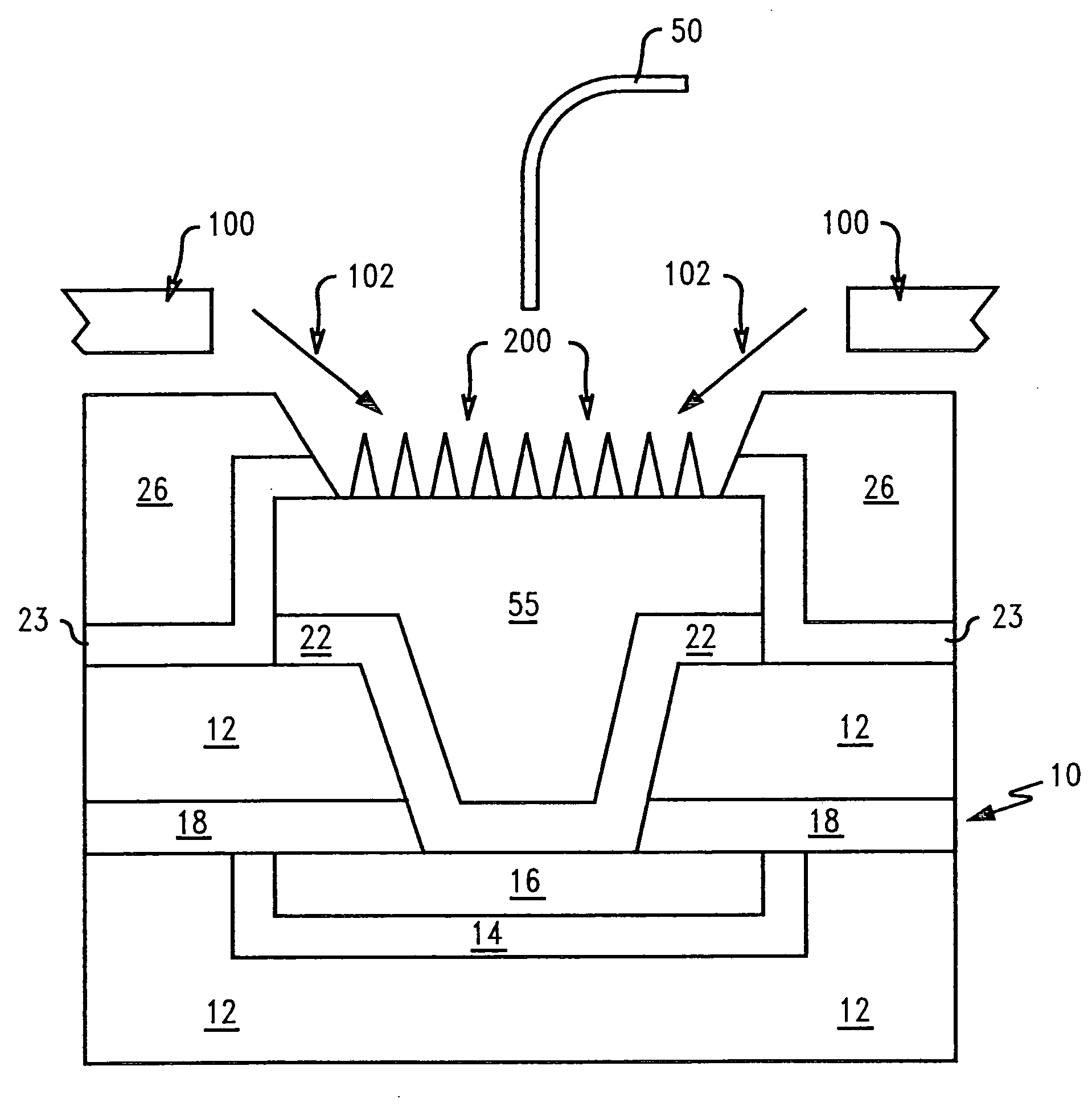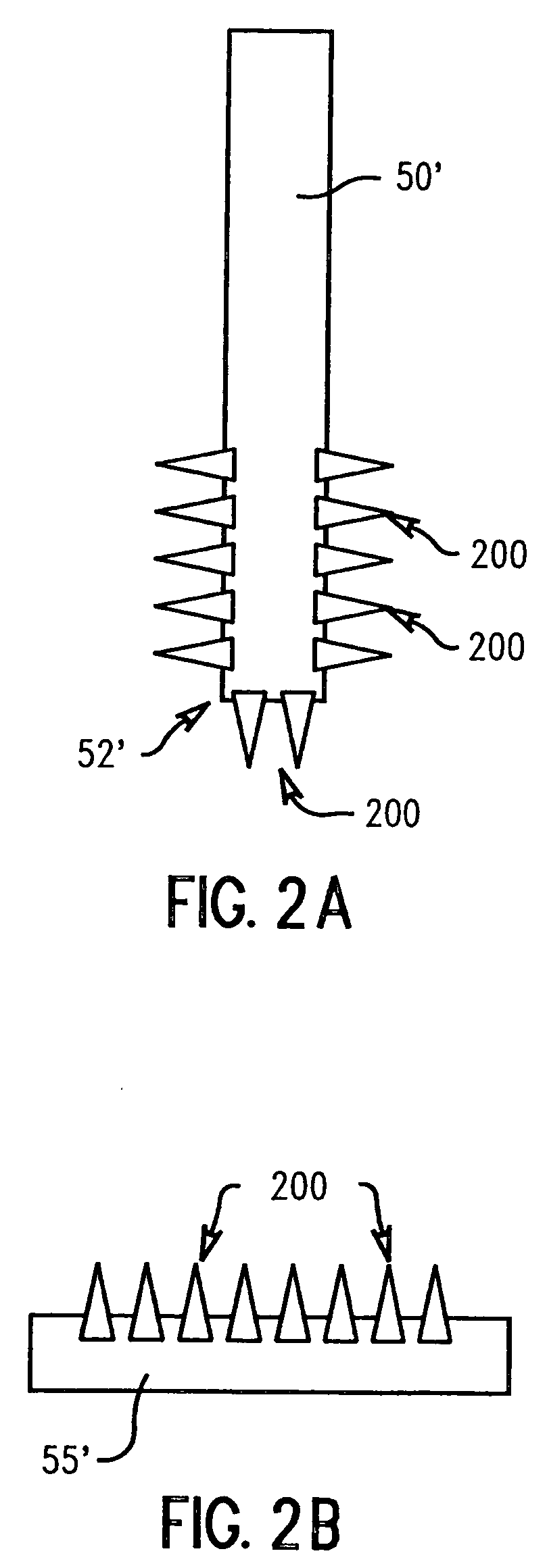Roughened bonding pad and bonding wire surfaces for low pressure wire bonding
a low-pressure wire bonding and bonding pad technology, applied in the direction of semiconductor devices, electrical equipment, semiconductor/solid-state device details, etc., can solve the problems of reducing the surface area of the bonding pad. , to achieve the effect of preventing damage to the semiconductor device undergoing processing and increasing the surface area
- Summary
- Abstract
- Description
- Claims
- Application Information
AI Technical Summary
Benefits of technology
Problems solved by technology
Method used
Image
Examples
Embodiment Construction
)
[0035] In describing the preferred embodiment of the present invention, reference will be made herein to FIGS. 1-3D of the drawings in which like numerals refer to like features of the invention.
[0036] Dielectrics have poor mechanical strength and are subject to cracking. Wire bonding to a semiconductor can induce cracks / damage in the dielectric when stresses are applied, which can ultimately lead to semiconductor failure. The present invention details a structure and method for low-pressure wire bonding to reduce the propensity of dielectric materials, particularly low-k dielectric materials, to mechanical failure.
[0037] In accordance with the invention, an approach is herein presented to increase the reactivity between the bond wire and the bond pad, which reduces the amount of pressure and ultrasonic and thermal energy required for wire bonding processing. In so doing, the invention discloses a roughened surface structure and methodology approach for low-pressure wire bonding ...
PUM
| Property | Measurement | Unit |
|---|---|---|
| roughness | aaaaa | aaaaa |
| roughness | aaaaa | aaaaa |
| roughness | aaaaa | aaaaa |
Abstract
Description
Claims
Application Information
 Login to View More
Login to View More - R&D
- Intellectual Property
- Life Sciences
- Materials
- Tech Scout
- Unparalleled Data Quality
- Higher Quality Content
- 60% Fewer Hallucinations
Browse by: Latest US Patents, China's latest patents, Technical Efficacy Thesaurus, Application Domain, Technology Topic, Popular Technical Reports.
© 2025 PatSnap. All rights reserved.Legal|Privacy policy|Modern Slavery Act Transparency Statement|Sitemap|About US| Contact US: help@patsnap.com



